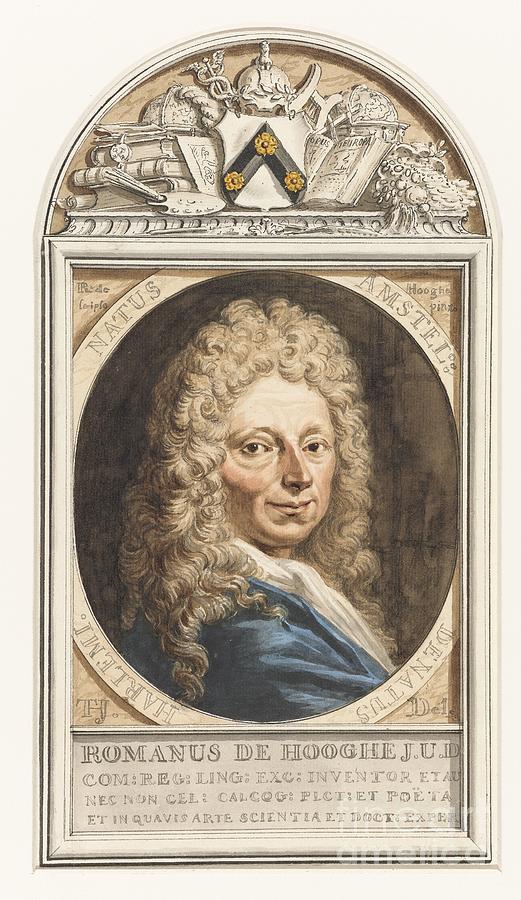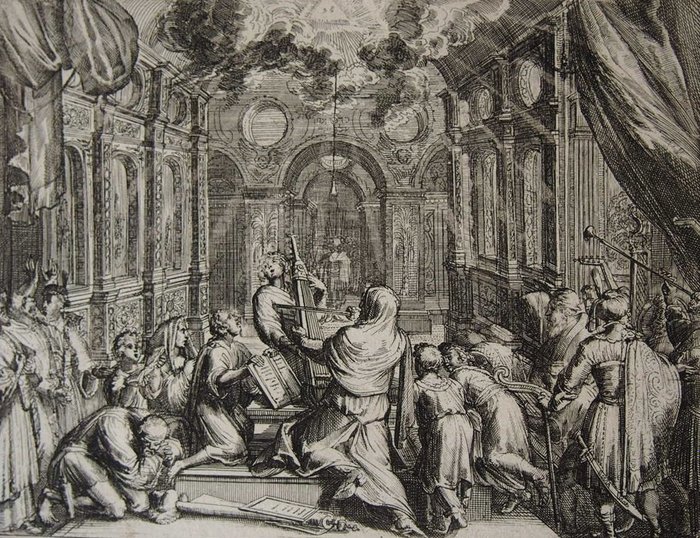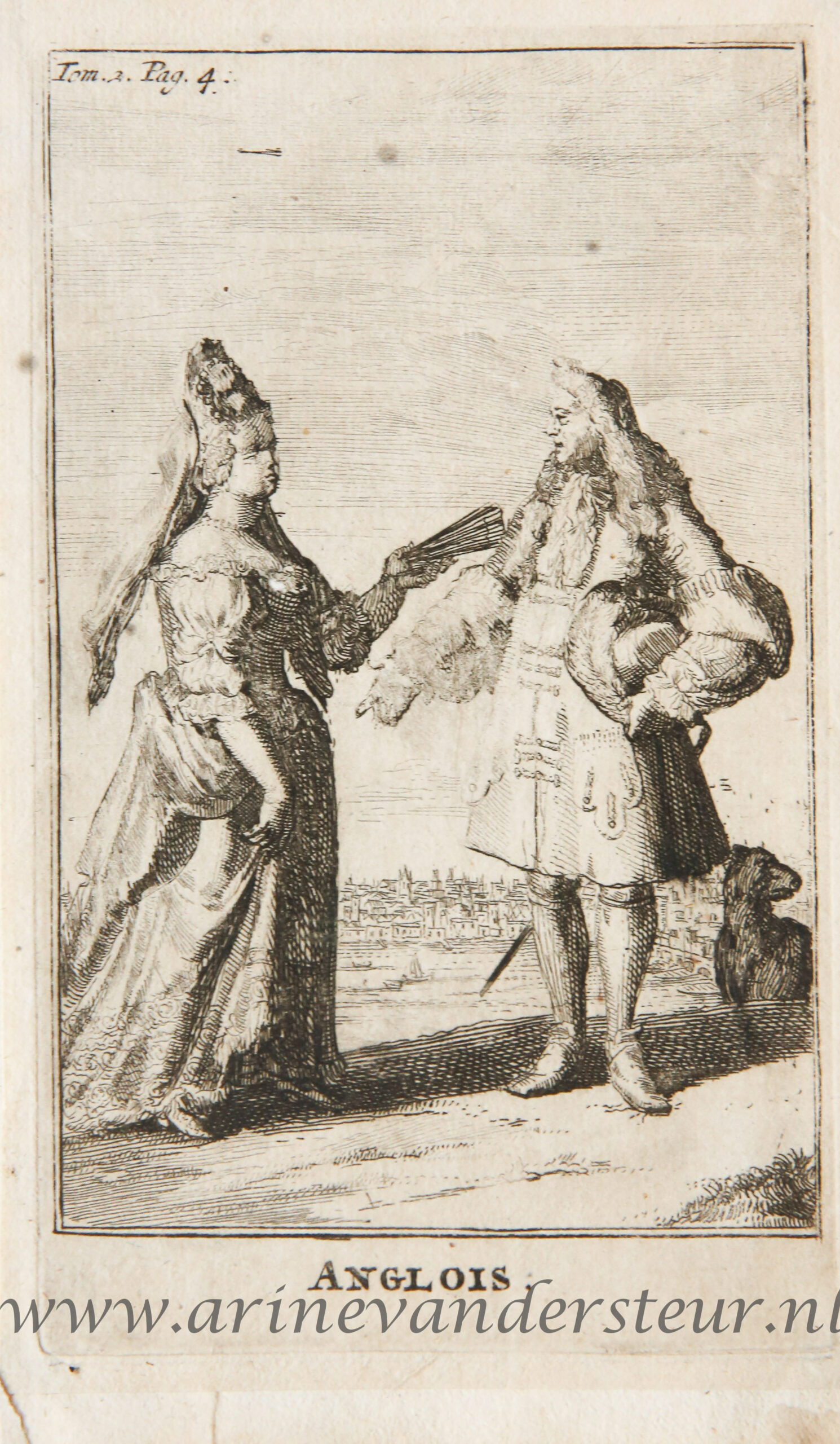
Romeyn de Hooghe Religious Print "THE WRATH OF GOD Handel Cap. 9, v.4" Copper Engraving
Romeyn de Hooghe was an important and prolific late Dutch Baroque, painter, sculptor, engraver and caricaturist. He was born in Amsterdam, and was a skilled etcher, draughtsman, painter, sculptor and medalist. He is best known for political caricatures of Louis XIV and propagandistic prints supporting William of Orange. He was also active as an.

Anno Domini 1672 Romeyn de Hooghe als bron Romeyn de Hooghe as a historical source
Romeyn de Hooghe. Dutch Golden Age painter, engraver, and sculptor (1645-1708) Upload media. Wikipedia. Date of birth. 10 September 1645. Amsterdam. Date of death. 10 June 1708.

Prints and Principles Romeyn de Hooghe’s etching, “Charles II of Spain Kneeling by a Carriage
3 Jacob Peeters after Romeyn de Hooghe, Triumfante intree van S. K. M. in Tent des Grooten Vizir, etching, Antwerp, c. 1692, David K. E. Bruce Fund De Hooghe executed a series of etchings recording the Battle of Vienna in September 1683 that were pubished in Brussels the following year in an account by Johann van Ghelen
Romeyn de Hooghe De Vlugt van 't Pausdom The Metropolitan Museum of Art
Romeyn de Hooghe was a mid-17th century, early 18th-century Dutch painter, sculptor, caricaturist and graphic artist. He was also active as a goldsmith, lawyer, writer and inventor. As a cartoonist De Hooghe was notorious for his many anti-French propaganda caricatures and erotic drawings, which led to a conviction for blasphemy and indecency..

Portrait of Romeyn de Hooghe, Tako Hajo Jelgersma, after Romeyn de Hooghe, 1712 1795 Painting
The name Romeyn de Hooghe is not unfamiliar to historians studying the seventeenth-century Dutch Republic and early modern prints, yet his private life, the full scope of his artistry and the alleged scandals surrounding his person have long remained obscure. This has changed with the publication of a biography by Henk van Nierop—an extensive.

Romeyn de Hooghe, Portret van Willem III ca 1672 Old paintings, Painting, History
Romeyn de Hooghe was the most inventive and prolific etcher of the later Dutch Golden Age. The producer of wide-ranging book illustrations, newsprints, allegories, and satire, he is best known as the chief propaganda artist working for stadtholder and king William III. This study, the first book-length biography of de Hooghe, narrates how his.

Romeyn de Hooghe (16451708) Eight biblical etchings, Catawiki
Artist: Romeyn de Hooghe (Dutch, Amsterdam 1645-1708 Haarlem) Publisher: Published by P. Rotterdam , Amsterdam. Artist: Carel Allard (Dutch, Amsterdam 1648-ca. 1709 Amsterdam) Date: 1689. Medium: Illustrations: etching and engraving. Dimensions: 21 5/8 x 13 3/4 x 13/16 in. (55 x 35 x 2 cm) Classifications: Albums, Books

Die Beschneidung Romeyn de Hooghe als Kunstdruck oder handgemaltes Gemälde.
This exhibition is no longer on view at the National Gallery. Overview: Artistically gifted and socially well connected, Romeyn de Hooghe (1645-1708) can help us to unravel the complexities of the late Dutch Golden Age, particularly through his vast and varied oeuvre of book illustrations. At a time when the Dutch Republic enjoyed great wealth and colonial expansion while also becoming.

[Antique etching, ets] Romeyn de Hooghe [or in the style of]. ANGLOIS (Engelsen), published 1650
Romeyn de Hooghe was the most inventive and prolific etcher of the later Dutch Golden Age. The producer of wide-ranging book illustrations, newsprints, allegori.

Prints and Principles Romeyn de Hooghe’s etching, “Apocalypse of St John”, c1704
Figure 1. Romeyn de Hooghe, Save us, Lord, we perish [Helpt ons Heere want wy vergaen], 1675, etching and engraving, 278 × 345 mm. Rijksmuseum Amsterdam, RP-P-OB-79.309A (FMH 2577; Atlas van Stolk 2622). Image in the public domain. Details of Figure 1: (a).Romeyn de Hooghe, Ship during the Storm on the Sea of Galilee, and (b).Romeyn de Hooghe, Restoration of Hope and Peace [Herstelling en.

Romeyn de Hooghe Raising of Lazarus with Scenes from the Life of Christ Artsy
The art of Romeyn de Hooghe : an atlas of European late baroque culture. Suggested searches in RKDlibrary. Author Wilson, William H. Publisher Harvard University. Artist's name Hooghe, Romeyn de. Keyword subject 17th century. Keyword subject North Netherlandish. Keyword subject painting. Keyword subject drawing art.

Romeyn de Hooghe Portret van Michiel de Ruyter, Romeyn de Hooghe, 1673 1676 Portret van
Romeyn de Hooghe (1645-1708) Born in Amsterdam in 1645 he worked mostly in Haarlem. He was a nephew of the painter Pieter de Hoogh (e). The great heyday of painting was already over. Rembrandt died in 1669. In 1666 Hals, in 1649 van Ostade, Vermeer in 1675, in 1679 Jan Steen and Frans van Mieris in 1681.

Romeyn de Hooghe Wiktenauer, the world's largest library of HEMA books and manuscripts
Romeyn de Hooghe (Dutch, Amsterdam 1645-1708 Haarlem) n.d. The Reception of Mary Stuart, Princess of Orange, as Queen of England. Romeyn de Hooghe (Dutch, Amsterdam 1645-1708 Haarlem) 1689. How Etchings are Made An illustrated explainer. Resources for Research. The.

Romeyn de Hooghe, Gezicht op het stadhuis te Haarlem, 1688 1689, ets op papier, 185mm x 239mm
Romeyn de Hooghe (bapt. 10 September 1645 - 10 June 1708) was a late Dutch Baroque painter, sculptor, engraver and caricaturist. Biography. He was born in Amsterdam, and was a skilled etcher, draughtsman, painter, sculptor and medalist.

Spencer Alley Romeyn de Hooghe (Dutch Panegyric and Satire)
Romeyn de Hooghe. Show kinship network; Show three step network of all documented relations; Name: Romeyn de Hooghe: Gender: male: Born: Amsterdam baptized on 1645-09-10: Died: Haarlem buried on 1708-06-15: Father: Romeyn de Hooghe (1620 - 1664) Mother: Susanne Gerarts (1619 - 1673) Marriages:

Romeyn de Hooghe, Double Portrait of Willem III and Mars, 1672,... Download Scientific Diagram
The satires produced between 1688 and 1690 by the Dutch printmaker Romeyn de Hooghe (1645-1708) on the events surrounding William III's campaigns against James II and Louis XIV establish many of the qualities that define the genre to this day: the transgression of bodily boundaries; the interdependence of text and image; the centrality of.